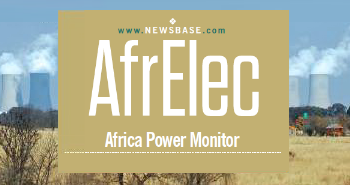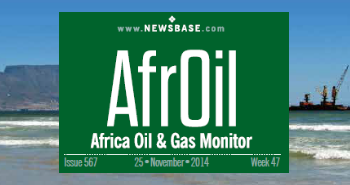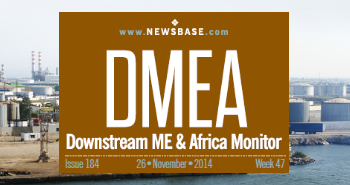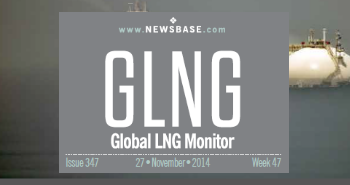South Africa’s national freight and logistics firm Transnet plans to avert looming gas shortages
The initiative focuses on gas-to-power generation to provide reliable base load electricity, positioning gas as key to re-industrialisation while unlocking global LNG resources for market supply.
What: According to Transnet Pipelines, importing gas from port terminals could help avoid a shortage of gas supply in South Africa.
Why: Sasol, a major player in the fuel and chemicals industry, faces an impending gas shortage, or “gas cliff,” as its gas reserves in the Pande and Temane fields in Mozambique begin to deplete.
What next: The first phase of the Richards Bay gas terminal could begin operations as early as 2027, aiming to boost LNG imports into South Africa and help alleviate gas supply shortages.
South Africa is seeking urgent solutions to avert a potential gas cliff, which could put 70,000 industry jobs in jeopardy, News24 reports. According to Transnet Pipelines, a division of the state-run rail freight and logistics company Transnet, importing gas from port terminals could help avoid a shortage of gas supply in the country.
Transnet Pipelines CEO Sibongiseni Khathi has said that the first phase of Richards Bay gas terminal could start operations as early as 2027, aiming to increase liquefied natural gas (LNG) imports into South Africa.
In January, Transnet National Ports Authority (TNPA) announced the selection of Vopak Terminal Durban and Transnet Pipelines to form a consortium responsible for developing and operating a gas terminal in Durban. This joint venture is set for a 25-year term, with Vopak being a 75% shareholder, while Transnet Pipelines will hold 25% in the project.
The gas-to-power project is part of South Africa’s efforts to enhance energy security and reduce emissions, aligning with the country's decarbonisation goals. Initially, the terminal was projected to be operational by early 2028. However, Khathi on October 9 informed delegates at the African Oil Week that this deadline could be moved forward to the first half of 2027.
“We are focusing on cleaner energy to become more sustainable, including bringing in gas infrastructure and gas at our Richards Bay Port with our consortium partner Vopak,” Khathi said, as reported by News24.
“We are in the process of finalising the development agreement with the port authority, and then the project could be going. This also calls for a need to develop the paradigm [or flow] of our pipelines to be reversed, to bring gas from Richards Bay to the inland market and as offtakes for gas-to-power solutions.”
The announcement comes as Sasol, a major player in the fuel and chemicals industry, faces an impending gas shortage, or “gas cliff,” as its gas reserves in the Pande and Temane fields in Mozambique begin to deplete. This shortfall poses a threat to around 70,000 jobs and ZAR 500bn in annual economic contributions.
Energy leaders’ collaboration
To address the looming gas shortage, Sasol recently signed a memorandum of understanding (MoU) with Eskom to secure gas supplies and lower emissions from the coal-reliant power utility. The MoU sets the path to explore and research future LNG requirements, the two companies said in a joint statement on September 20, as reported by NewsBase.
According to the statement, the collaboration aims to assess the necessary LNG volumes and infrastructure required to establish a viable LNG import market in South Africa, supported by intergovernmental cooperation where needed.
The initiative focuses on gas-to-power generation to provide reliable base load electricity, positioning gas as key to re-industrialisation while unlocking global LNG resources for market supply.
At the conference, Khathi emphasised the urgency of establishing the country’s first gas terminal. “We want to see the first gas terminal in the country. Most people know we are facing a gas cliff, so we are trying to compress these timelines,” he said.
The initial phase of the terminal, with a capacity of 2mn tonnes per annum (mtpa), is scheduled for early 2028, but efforts are underway to push this date forward to 2027 to avoid gas shortages, Khathi explained. A second phase, expected by 2030, will increase capacity to 5mtpa, with the total project cost estimated at ZAR14bn ($800mn).
Gas import plans
Natural gas will start being fed into the terminal next year to kick off the LNG production process. The final investment decision (FID) which will allow the parties to proceed with the project is anticipated by 2026, according to Transnet Pipelines. At a media briefing after the conference, Khathi expressed confidence that the project would be completed on time.
“We have full confidence in bringing the imported gas,” Khathi said as quoted by News24. “All the stakeholders are getting into one room to discuss the issues of gas challenges in the country, including the current users of the gas. At a ministerial level, there is support to avoid the cliff. We are trying to fast-track the project and relevant approvals to meet the required deadline.”
According to Khathi, Transnet Pipelines is also working on repurposing its Lilly Pipeline, which runs between the port of Durban and Sasol’s petrochemicals plant in Secunda, to enable the transport of LNG. This project includes the installation of metering stations for gas users. Although the project is still in the process of being marketed, it is expected to be completed by the last quarter of 2027, with a capacity upgrade scheduled for 2029.
Furthermore, head of business development for Transnet Pipelines Kresen Naicker announced that the signing of the terminal operating agreement and the 25-year concession agreement for the Richards Bay gas terminal would take place on October 21. Naicker noted that there was a huge focus on this project to meet the demands of industrial gas users and the gas-to-power developments of Eskom and independent power producers (IPPs).
Gas-to-power
Additionally, the TNPA is planning to develop another gas-to-power project at the Ngqura Port in Algoa Bay. Ngqura is the newest port in South African port system midway In January, the government launched its first-ever procurement round for 2,000 MW of gas-fired power generation for land-based projects, as part of the 3,000-MW gas-to-power target outlined in the 2019 Integrated Resources Plan.
However, gas-to-power projects have faced opposition from environmental groups. In March, the Centre for Environmental Rights applied to the Gauteng High Court for a review of the Department of Forestry, Fisheries, and Environment’s decision to approve environmental clearance for the 2,000-MW Phakwe gas power plant in Richards Bay. Environmental activists expressed concerns that additional gas power plants in the area could exacerbate air quality issues, which are already a known problem in Richards Bay.
Nevertheless, South Africa’s Minister of Electricity and Energy Kgosientsho Ramokgopa has emphasised the role of gas as the second-largest contributor to global electricity production. He noted that “many countries shift from coal to gas in their energy mix to enable positive implications for climate change, as gas typically emits less CO2 per unit of energy.”





Follow us online